
An astronomer is a scientist in the field of astronomy who focuses their studies on a specific question or field outside the scope of Earth. They observe astronomical objects such as stars, planets, moons, comets and galaxies – in either observational or theoretical astronomy. Examples of topics or fields astronomers study include planetary science, solar astronomy, the origin or evolution of stars, or the formation of galaxies. A related but distinct subject is physical cosmology, which studies the Universe as a whole.

Sandra Moore Faber is an American astrophysicist known for her research on the evolution of galaxies. She is the University Professor of Astronomy and Astrophysics at the University of California, Santa Cruz, and works at the Lick Observatory. She has made discoveries linking the brightness of galaxies to the speed of stars within them and was the co-discoverer of the Faber–Jackson relation. Faber was also instrumental in designing the Keck telescopes in Hawaii.
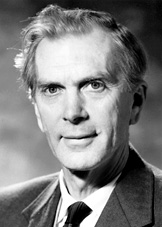
Sir Martin Ryle was an English radio astronomer who developed revolutionary radio telescope systems and used them for accurate location and imaging of weak radio sources. In 1946 Ryle and Derek Vonberg were the first people to publish interferometric astronomical measurements at radio wavelengths. With improved equipment, Ryle observed the most distant known galaxies in the universe at that time. He was the first Professor of Radio Astronomy in the University of Cambridge and founding director of the Mullard Radio Astronomy Observatory. He was the twelfth Astronomer Royal from 1972 to 1982. Ryle and Antony Hewish shared the Nobel Prize for Physics in 1974, the first Nobel prize awarded in recognition of astronomical research. In the 1970s, Ryle turned the greater part of his attention from astronomy to social and political issues which he considered to be more urgent.

Eleanor Margaret Burbidge, FRS (née Peachey; 12 August 1919 – 5 April 2020) was a British-American observational astronomer and astrophysicist. In the 1950s, she was one of the founders of stellar nucleosynthesis and was first author of the influential B2FH paper. During the 1960s and 1970s she worked on galaxy rotation curves and quasars, discovering the most distant astronomical object then known. In the 1980s and 90s she helped develop and utilise the Faint Object Spectrograph on the Hubble Space Telescope. Burbidge was well known for her work opposing discrimination against women in astronomy.
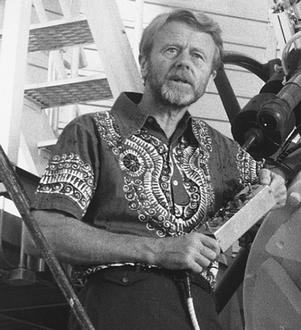
Anton M.J. "Tom" Gehrels was a Dutch–American astronomer, Professor of Planetary Sciences, and Astronomer at the University of Arizona, Tucson.

David Clifford Jewitt is a British-American astronomer who studies the Solar System, especially its minor bodies. He is based at the University of California, Los Angeles, where he is a Member of the Institute for Geophysics and Planetary Physics, the Director of the Institute for Planets and Exoplanets, Professor of Astronomy in the Department of Physics and Astronomy and Professor of Astronomy in the Department of Earth, Planetary and Space Sciences. He is best known for being the first person to discover a body beyond Pluto and Charon in the Kuiper belt.

Virginia Louise Trimble is an American astronomer specializing in the structure and evolution of stars and galaxies, and the history of astronomy. She has published more than 600 works in Astrophysics, and dozens of other works in the history of other sciences. She is famous for an annual review of astronomy and astrophysics research that was published in the Publications of the Astronomical Society of the Pacific, and often gives summary reviews at astrophysical conferences. In 2018, she was elected a Patron of the American Astronomical Society, for her many years of intellectual, organizational, and financial contributions to the society.
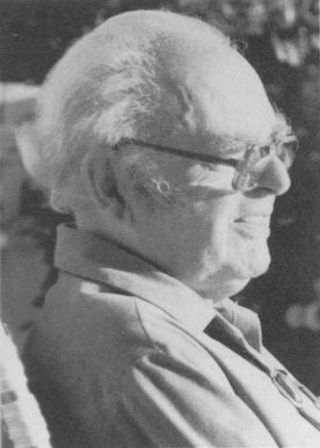
Bartholomeus Jan "Bart" Bok was a Dutch-American astronomer, teacher, and lecturer. He is best known for his work on the structure and evolution of the Milky Way galaxy, and for the discovery of Bok globules, which are small, densely dark clouds of interstellar gas and dust that can be seen silhouetted against brighter backgrounds. Bok suggested that these globules may be in the process of contracting, before forming into stars.
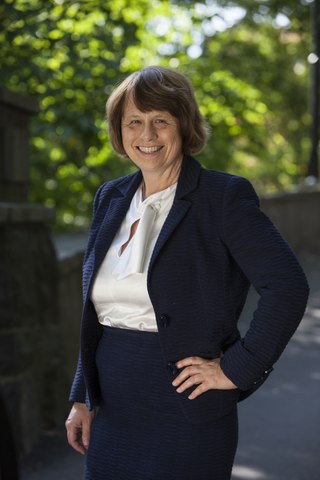
Ewine Fleur van Dishoeck is a Dutch astronomer and chemist. She is Professor of Molecular Astrophysics at Leiden Observatory, and served as the President of the International Astronomical Union (2018–2021) and a co-editor of the Annual Review of Astronomy and Astrophysics (2012–present). She is one of the pioneers of astrochemistry, and her research is aimed at determination of the structure of cosmic objects using their molecular spectra.

Anil Kumar Das FRAS, FNI was an Indian scientist, astronomer. During the International Geophysical Year, observatories in Madrid, India, and Manila were responsible for monitoring solar effects. The Kodaikanal Solar Observatory in South India performed this monitoring using their recently built solar tunnel telescope. Das was the director of the Kodaikanal observatory at this time. In 1960 he was responsible for installing a tower/tunnel telescope at the facility that would be used to perform some of the first helioseismology investigations. The crater Das on the far side of the Moon is named after him.

Hermann Alexander Brück CBE FRSE was a German-born astronomer, who spent the great portion of his career in various positions in Britain and Ireland.

Kenneth Charles Freeman is an Australian astronomer and astrophysicist who is currently Duffield Professor of Astronomy in the Research School of Astronomy and Astrophysics at the Mount Stromlo Observatory of the Australian National University in Canberra. He was born in Perth, Western Australia in 1940, studied mathematics and physics at the University of Western Australia, and graduated with first class honours in applied mathematics in 1962. He then went to Cambridge University for postgraduate work in theoretical astrophysics with Leon Mestel and Donald Lynden-Bell, and completed his doctorate in 1965. Following a postdoctoral appointment at the University of Texas with Gérard de Vaucouleurs, and a research fellowship at Trinity College, Cambridge, he returned to Australia in 1967 as a Queen Elizabeth Fellow at Mount Stromlo. Apart from a year in the Kapteyn Institute in Groningen in 1976 and some occasional absences overseas, he has been at Mount Stromlo ever since.

Bosscha Observatory is the oldest modern observatory in Indonesia, and one of the oldest in Asia. The observatory is located in Lembang, West Java, approximately 15 kilometers (9.3 mi) north of Bandung. It is situated on a hilly six hectares of land and is 1,310 m (4,300 ft) above mean sea level plateau. The IAU observatory code for Bosscha is 299.
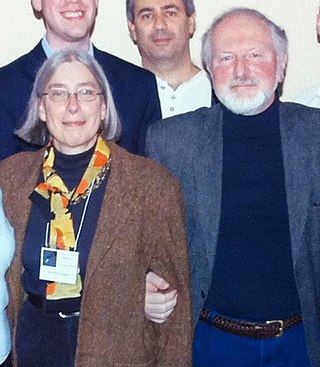
Martha Patricia Haynes is an American astronomer who specializes in radio astronomy and extragalactic astronomy. She is the distinguished professor of arts and sciences in astronomy at Cornell University. She has been on a number of high-level committees within the US and International Astronomical Community, including advisory committee for the Division of Engineering and Physical Sciences of the National Academies (2003–2008) and Astronomy and Astrophysics Decadal Review. She was a vice-president of the executive committee of the International Astronomical Union from 2006–2012, and was on the board of trustees of Associated Universities Inc from 1994 until 2016, serving two terms as board chair and one year as interim president.
George Henry Rieke, a noted American infrared astronomer, is former Deputy Director of the Steward Observatory and Regents Professor of Astronomy and Planetary Sciences at the University of Arizona in Tucson. He led the experiment design and development team for the Multiband Imaging Photometer for Spitzer (MIPS) instrument on NASA's infrared Spitzer Space Telescope, and currently chairs the science team of the Mid-Infrared Instrument for the James Webb Space Telescope.
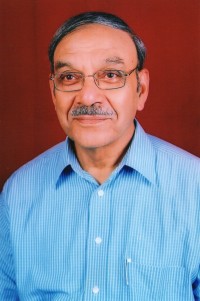
Shaikh Mohammad Razaullah Ansari was an Indian historian of science, physicist, astronomer and writer.

Margaret Harwood was an American astronomer specializing in photometry and the first director of the Maria Mitchell Observatory in Nantucket, Massachusetts. An asteroid discovered in 1960, was named in her honor, 7040 Harwood.
Shashikumar Madhusudan Chitre FNA, FASc, FNASc, FRAS was an Indian mathematician and astrophysicist, known for his research in Astronomy and Astrophysics. The Government of India honored him, in 2012, with Padma Bhushan, the third highest civilian award, for his services to the sciences.

Donat G. Wentzel was an American astrophysicist, best known as astronomy educator of undergraduates, graduates, and young researchers. A graduate of the University of Chicago, he established himself in plasma astrophysics, working on cosmic magnetism and electrical currents flowing both between the stars and on the Sun. His outstanding contribution was on Alfven waves driven by cosmic rays and the emission processes of solar flares at radio waves. His book on the “Restless Sun,” written for undergraduates, was named Book of the Year by the Astronomical Society of the Pacific in 1989. Wentzel received 2003 the George Van Biesbroeck Prize. His nomination reads: "For outstanding and sustained contributions during three decades to astronomy education in this country."
Elske van Panhuys Smith is a Dutch-American astronomer, academic administrator, and author of books on astronomy. She has also been outspoken about discrimination against women in academia.

















